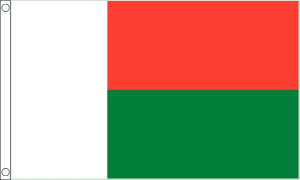Difference between revisions of "Language/Southern-betsimisaraka-malagasy/Grammar/Subject-and-Verb"
m (Quick edit) |
m (Quick edit) |
||
| Line 1: | Line 1: | ||
<span pgnav> | |||
{| class="wikitable pg_template_nav" | |||
|[[Language/Southern-betsimisaraka-malagasy/Vocabulary/Introduction-and-Response|◀️ Introduction and Response — Previous Lesson]] | |||
|[[Language/Southern-betsimisaraka-malagasy/Grammar/Negation-and-Questions|Next Lesson — Negation and Questions ▶️]] | |||
|} | |||
</span> | |||
{{Southern-betsimisaraka-malagasy-Page-Top}} | {{Southern-betsimisaraka-malagasy-Page-Top}} | ||
| Line 105: | Line 112: | ||
{{Southern-betsimisaraka-malagasy-Page-Bottom}} | {{Southern-betsimisaraka-malagasy-Page-Bottom}} | ||
<span links></span> | <span links></span> | ||
<span pgnav> | |||
{| class="wikitable pg_template_nav" | |||
|[[Language/Southern-betsimisaraka-malagasy/Vocabulary/Introduction-and-Response|◀️ Introduction and Response — Previous Lesson]] | |||
|[[Language/Southern-betsimisaraka-malagasy/Grammar/Negation-and-Questions|Next Lesson — Negation and Questions ▶️]] | |||
|} | |||
</span> | |||
Revision as of 19:18, 29 March 2023
| ◀️ Introduction and Response — Previous Lesson | Next Lesson — Negation and Questions ▶️ |
As a beginner in Southern Betsimisaraka Malagasy, it is essential to understand the basic sentence structure, including the role of the subject and the verb. In this lesson, you will learn about the fundamental elements of a sentence in Southern Betsimisaraka Malagasy and how they fit together.
Don't hesitate to look into these other pages after completing this lesson: Negation and Questions & Give your Opinion.
Southern Betsimisaraka Malagasy Sentence Structure
In Southern Betsimisaraka Malagasy, sentences typically follow the subject-verb-object order. The subject is the person or thing doing the action, the verb is the action, and the object is the recipient of the action. Here is an example of a basic sentence in Southern Betsimisaraka Malagasy:
- Subject: Misiôlôtsa
- Verb: miresaka
- Object: teny anglisy
Translated to English, this sentence means "Misiôlôtsa is speaking English."
You may also notice that Southern Betsimisaraka Malagasy uses a lot of inflection, and word order is not as strict as in other languages. However, it is still essential to use the proper subject-verb-object order to convey your message accurately.
Subject Pronouns
In Southern Betsimisaraka Malagasy, just like in English, subject pronouns are used to replace the subject noun. They are crucial elements of sentence construction. Here are the subject pronouns in Southern Betsimisaraka Malagasy:
| Southern Betsimisaraka Malagasy | Pronunciation | English |
|---|---|---|
| aho | ah-hoo | I |
| ianao | yah-now | You (singular) |
| izahay | ee-za-ha-y | We |
| ireo | ee-reh-oh | They |
Verbs in Southern Betsimisaraka Malagasy
Verbs in Southern Betsimisaraka Malagasy are critical to construct sentences. They are action words that depict what the subject is doing. Verbs in Southern Betsimisaraka Malagasy often end in the letter -a. Here are examples of some common verbs in Southern Betsimisaraka Malagasy:
| Southern Betsimisaraka Malagasy | Pronunciation | English |
|---|---|---|
| manao | mah-nah-oo | to do |
| mihinam-bary | mee-hee-nahm-bah-ry | to eat food |
| milaza | mee-lah-zah | to say |
| miteny | mee-teh-ny | to speak |
| mivoatra | mee-voo-ah-tr | to come out |
Word Examples
Here are some examples of simple sentences in Southern Betsimisaraka Malagasy.
- Misiôlôtsa miresaka teny anglisy. (Misiôlôtsa is speaking English.)
- Izahay miteny Malagasy. (We speak Malagasy.)
- Avia manao ny asany. (Let him/her do his/her work.)
Negation and Questions
In Southern Betsimisaraka Malagasy, there are two ways to form negative sentences: by adding the word "tsy" before the verb or using the verb "dia tsy."
For example:
- Tsy miteny aho. (I don't speak.)
- Aza milaza ny fomba fanarahanao. (Do not say how you learned it.)
- Dia tsy miteny ny mpanoratra. (The writer doesn't speak.)
In Southern Betsimisaraka Malagasy, a question is formed by adding the word "na," "voatse," or "inona" at the beginning of the sentence. Alternatively, you can change the intonation of the sentence to indicate a question.
For example:
- Na inona no lazaina? (What should we say?)
- Voatse misy ny vady? (Does she have a spouse?)
- Inona no andrasanao? (What are you going to do?)
Learning the basic sentence structure of Southern Betsimisaraka Malagasy is a crucial part of mastering the language. By understanding the roles of the subject and the verb, you can begin to construct simple sentences effectively. In the next lesson, we will cover negation and forming questions using this basic sentence structure.
Other Lessons
- 0 to A1 Course
- Pronouns
- Adjectives
- Adverbs of Frequency and Manner
- Descriptive Adjectives
- Nouns
- Prepositions of Place
- How to Use Have
- Give your Opinion
Template:Southern-betsimisaraka-malagasy-Page-Bottom
| ◀️ Introduction and Response — Previous Lesson | Next Lesson — Negation and Questions ▶️ |
